Hoka Kawana Review (2024): Budget-Friendly Versatile Pick
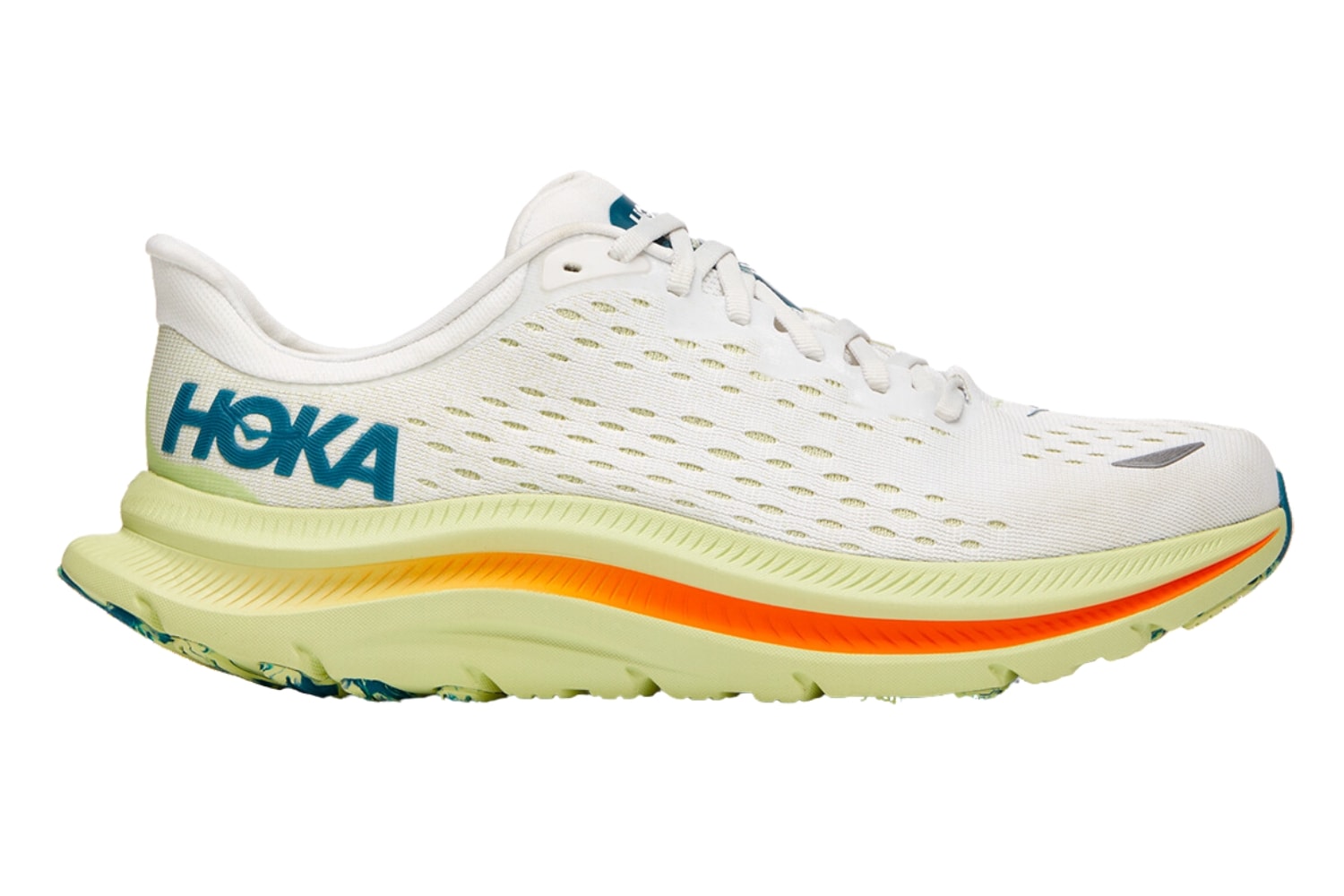
Published on: 09/20/2023
Dynamic and versatile, this blend of Hoka's Hupana and Clifton can be your first foray into the brand's range of shoes.Consensus
Unparalleled versatility for Hoka’s first crossover between indoor and outdoor running and beyond.
Don’t have time to read the full review? Here’s what you need to know.
Hoka’s new Kawana shoes mean to do it all: be comfortable enough on longer runs and on shorter high-intensity workouts, feel good while lifting weights or doing indoor exercise, and even hit the trails with confidence. They have a dense, heavier foam to deliver cushioning with firm support on road and trail. The signature Swallow Tail heel design promises smoother heel strikes and the midfoot feeling is equally comfortable and responsive.
With good traction on all types of terrain and in wet conditions, it feels like there’s nothing the Kawanas can’t do. They will likely develop a niche following from those who like the cushioned landing on the best-selling Cliftons, but want to save some money by getting just the one shoe for all uses. They’re also great for heel striking runners or for those looking for more Achilles tendon protection, as well as for runners on a budget.
Please read our full review of the Hoka Kawana for more information.
PROS
- Incredibly versatile
- Equally good for long runs and tempos
- Breathable and comfy upper
- Heel striker friendly
- Excellent value for money
- Vegan and recycled materials
CONS
- Heavier than most road trainers
- Slightly tight forefoot for some
- Jack of all trades, master of none
Introduction

The Kawana is Hoka’s first shoe that offers a crossover between gym workouts and running. Combining the brand’s knowledge of plush, comfortable road running shoes like the Clifton Edge with a more versatile design, lower stack height and firmer midsole, beginner runners should find this to be their one-shoe-to-rule-them-all.
If you’re going away for work or short vacations and don’t have room for too much in your bag, you should be able to hit the hotel gym and then do a few runs in the same pair of shoes. With a name that’s drawn from Australia’s Kawana Beach, it’s no wonder that user reviews associate Hoka’s new fitness and running shoes with going on holiday. They’re also designed for run commuting, walking, or just everyday wear.
Other models are lighter and offer more responsiveness, but can the Kawana provide better value for money by ticking several boxes, even if it doesn’t excel in any one of them? Who’s it best suited for and what are its weaknesses? Read our complete review to get the details.
Cushioning

At launch, Hoka positioned this brand new shoe in between the Clifton 8 and the Bondi 7. It’s supposed to provide cushioned comfort and a decent stack height. However, the Kawana is also good for walking, working out, or commuting.
Stack height, drop and underfoot feel
Using some of the technology already employed in other Hoka shoes, the Kawana benefits from a CMEVA foam in the midsole. It feels soft and stable for HIIT workouts including jumps and burpees, while also providing shock dispersion and a smooth ride for indoor running.
The stack sits at 30 mm under the heel and 25 mm under the toes for men, while the women’s shoe is lower to the ground at 27 mm and 22 mm, respectively. As with many other Hoka models, there’s not much of a drop, but 5 mm feels suitable for a variety of activities.
As for the underfoot feel, many users say it works for various foot shapes and provides a generally stable ride. You wouldn’t choose the Hoka Kawana for marathon training, but you can easily use it for gym classes, treadmill sessions, and weekly road runs. However, it’s still a pretty stacked Hoka trainer, so it feels excessive to wear it just for lifting weights.
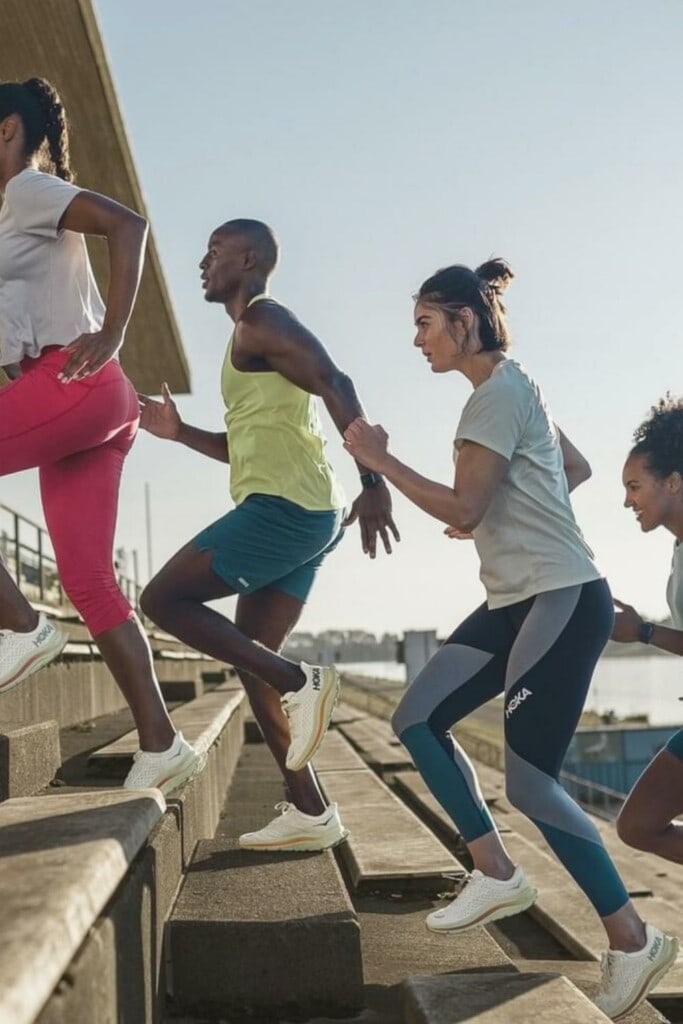
Energy return
The compression molded EVA (CMEVA) foam in the midsole platform is denser and heavier than in other Hokas. This makes the Kawana firmer and less bouncy than the brand’s lightweight running-only models. However, there’s enough shock absorption for shorter runs, plus stability for gym workouts.
Like the Mach Supersonic and its sister Mach line, the Kawana features an early stage meta rocker, giving runners a forward propulsion. The Swallow Tail design of the heel absorbs shocks at the back of the foot and helps with a smooth transition. However, the resulting wide platform is maybe unnecessary for those who plan to use the shoe mostly indoors.
Support and gait type
Heel strikers will be happy with the Kawana’s asymmetrical SwallowTail heel, which makes running more fluid and less impact-heavy. The interior side of the heel is about half an inch shorter than the exterior, which is also meant to distribute the heel strike impact. Beyond that, the Kawana is a neutral shoe so it doesn’t feature any traditional stability elements through the mid foot.
One interesting design feature is an anatomical-friendly construction that aims to support the back of the legs considerably more than we’ve seen in other Hoka shoes. The Kawana relieves some of the pressure off the Achilles tendon, with added heel collar cushioning and an extended crash pad to take more impact off the landings.
While the wider platform and Swallow Tail heel may feel a bit overkill for the gym and for indoor workouts, they make the Kawana a choice shoe for beginner runners or for those looking for more shock absorption, without too soft of a foam.
Foot Lockdown
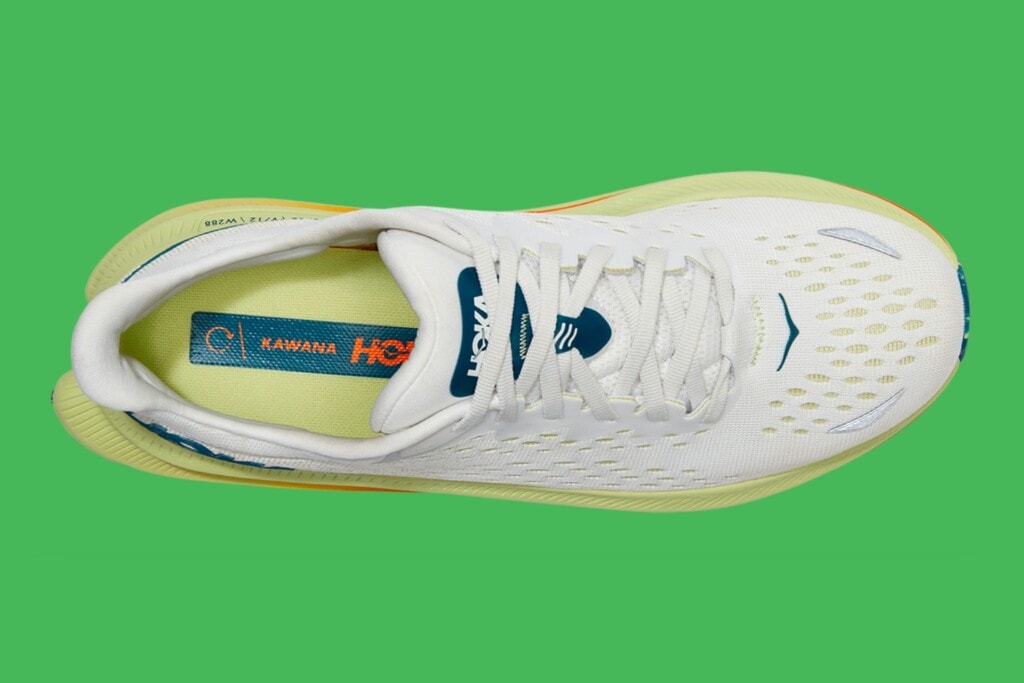
One of the particularities of the Hoka Kawana is how well the shoes perform not just for a range of workouts from recovery runs to speedwork, but also beyond running. The trusty foot hold and firm design allows them to be worn during anything from Crossfit to indoor biking and exercise classes. Their new foam is also firmer, with less flexibility and pillowy bounce, but with an appreciated level of reliability and comfort.
Fit and sizing
The engineered jacquard mesh is covered by thin flat laces that tie up close to the foot. This gives a sensation of secure fit without being too tight. The rounded toe box tapers, which means that some runners will feel a bit tight in the forefoot.
Some reviews complain of lateral side pressure on the medial portion of the foot. At the same time, the firmer sidewalls make the Hoka Kawana suitable for all-day wear and for using in cross-training workouts like jumps, HIIT, or weight lifting.
As with many Hokas, the shoes fit true to size for length, but a bit wide through the midfoot. Luckily, the lacing makes it relatively easy to get the fit dialed by tightening well.
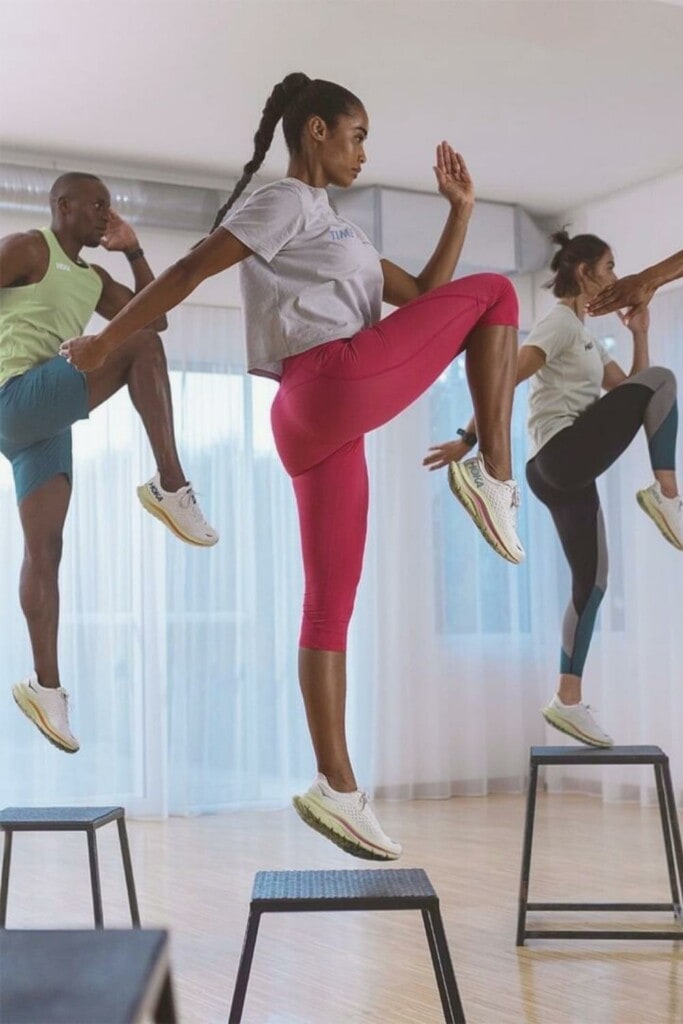
Men’s vs. women’s version
Interestingly, the Hoka Kawana has different stack heights for men and women. The women’s shoes are closer to the ground at 27 mm under the toes and 22 mm under the heel, while the men’s are 3 mm higher overall (but keeping the same 5 mm drop).
The Kawana weighs 285 g in men’s size 42 (10 oz for size 9 in the US) and 269 g in women’s size 40 (8.4 oz for size 7 in the US). It’s a pretty standard weight, justified if you consider their versatile nature. Other shoes will feel considerably more responsive as the pace picks up on your runs, but Hoka offers more stability and everyday comfort with this heavier design.
Breathability and protection
The Kawana’s comfortable upper is thin and breathable thanks to the recycled jacquard mesh. At faster paces or on a hot day, it lets the feet breathe better than other offerings that prioritize added cushion on the top of the foot.
Some reports complain of feeling tight in the forefoot, while others suggest that the Hoka Kawana fit nicely enough that they can be worn without socks! This is, as usual, a matter of extreme subjectivity, but the consensus is that runners’ feet felt breezy and dry indoors and on warm days. Toes are spaced out enough, too.
Use
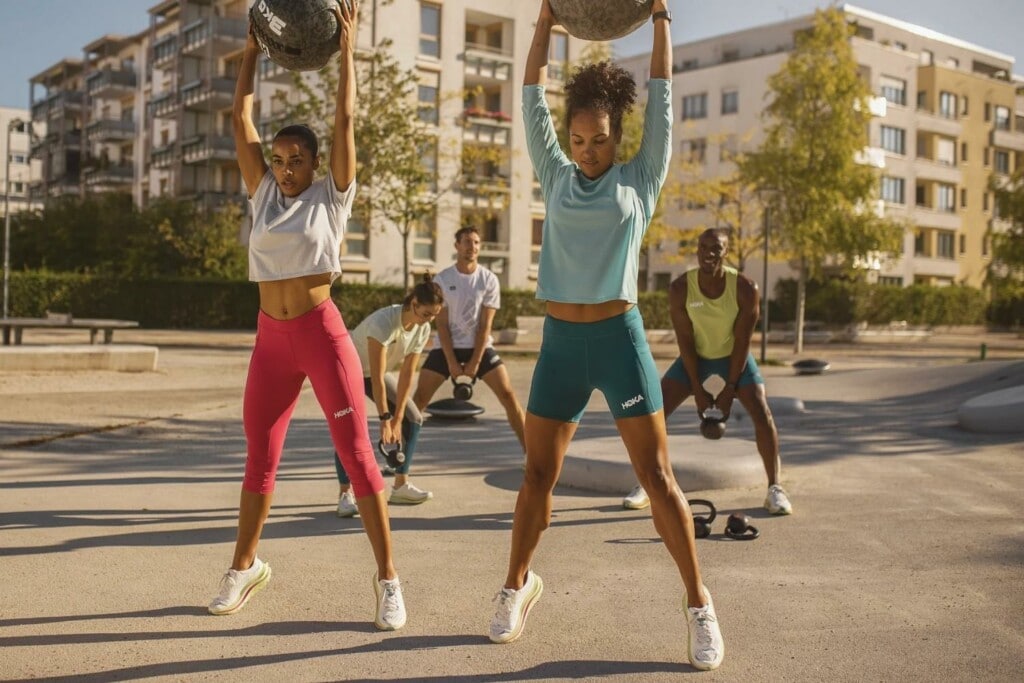
Hoka’s first multi-activity shoe doesn’t necessarily fill a screaming gap in the market and can’t possibly serve all purposes perfectly. On long runs, the Kawana could generally do with more pop in the cushioning. For shorter stints or warmups, however, the slight rocker and moderately cushioned midsole are springy enough to go the distance and leave many a runner surprised by their ability to deliver a fun ride.
Specialty
Sitting quite apart in the Hoka lineup, the Kawana fits well in a gym, running outside, or working out in circuit classes or the weight room. It doesn’t feature a carbon plate or too many stability elements, but many runners enjoy it for everything from recovery to tempo runs.
Neutral runners will appreciate this shoe the most. Heel strikers are also likely to spend more time in the Kawana, thanks to the design that favors a smoother transition forwards and good shock dispersion from the heel outwards.
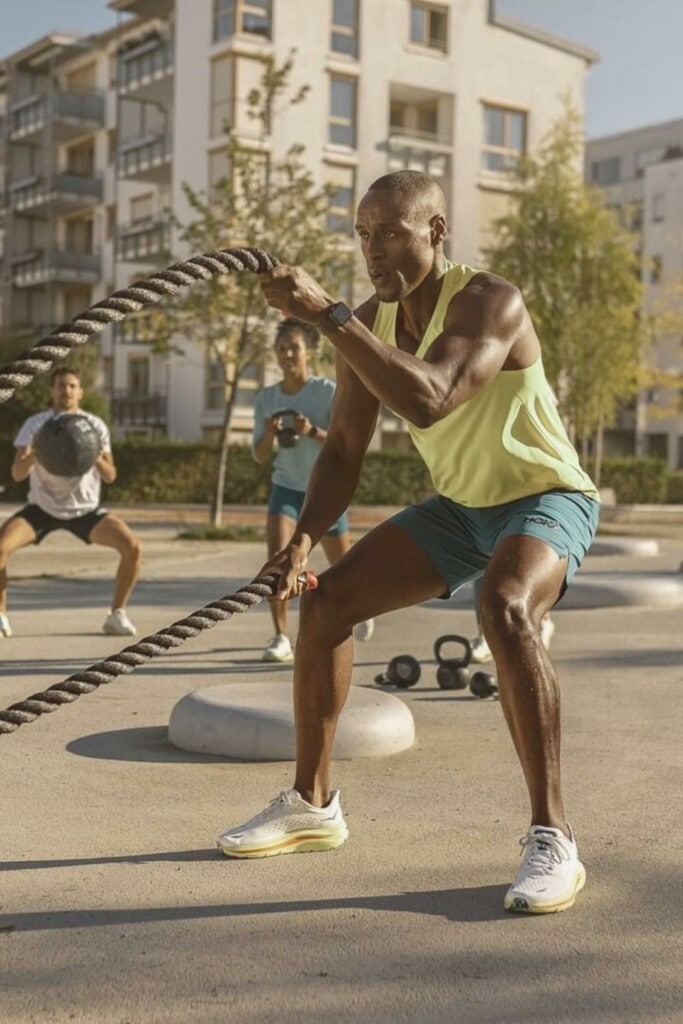
Other good scenarios
If you’re looking for a firmer midsole while still enjoying the cushioning of a classic Hoka shoe, the Kawana can serve as an everyday trainer wherever you go. It’s not too stiff for longer runs and its wider base gives good stability on most terrain.
Thanks to the tendon-protecting design and soft heel tab, the Kawana can also be a good running shoe when coming back from injury. It diminishes the impact of an aggressive heel strike, while cradling the back of the ankle. Tendonitis sufferers, rejoice!
Traction
Surprisingly for a shoe meant for indoor training and the roads, the Kawana also delivers decent traction and a good feeling on trails. The outsole features deep grooves and a stable platform for running on dry surfaces, but also for jumping sideways and doing burpees and other cross-training exercises.
In wet conditions, most users report it to hold up well. This can be partly due to the rubber pods surrounded by foam, which gives them more grip than some other models in the Hoka line of road shoes.
Quality and Durability
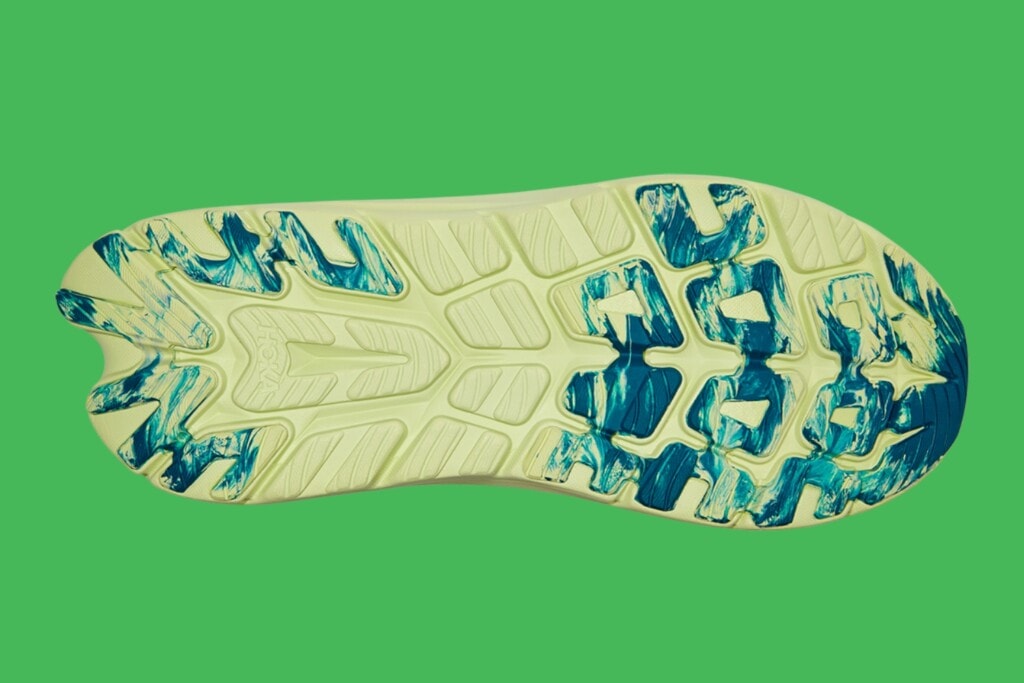
According to Hoka, the compression molded EVA midsole is more durable, so the Kawana should provide good value for money and a slightly longer life than the shoes that came before it. It also features durable rubber pods separated by deep flex grooves – creating a long-lasting outsole. In addition to a positive nod to recycling and vegan materials, it looks like the Kawana scores highly on all accounts.
Sustainability and pricing
The Kawana’s outsole is made from high abrasion rubber that should withstand some serious mileage. Additionally, its heavier outsole rubber also suggests that it will last longer than lighter running shoes.
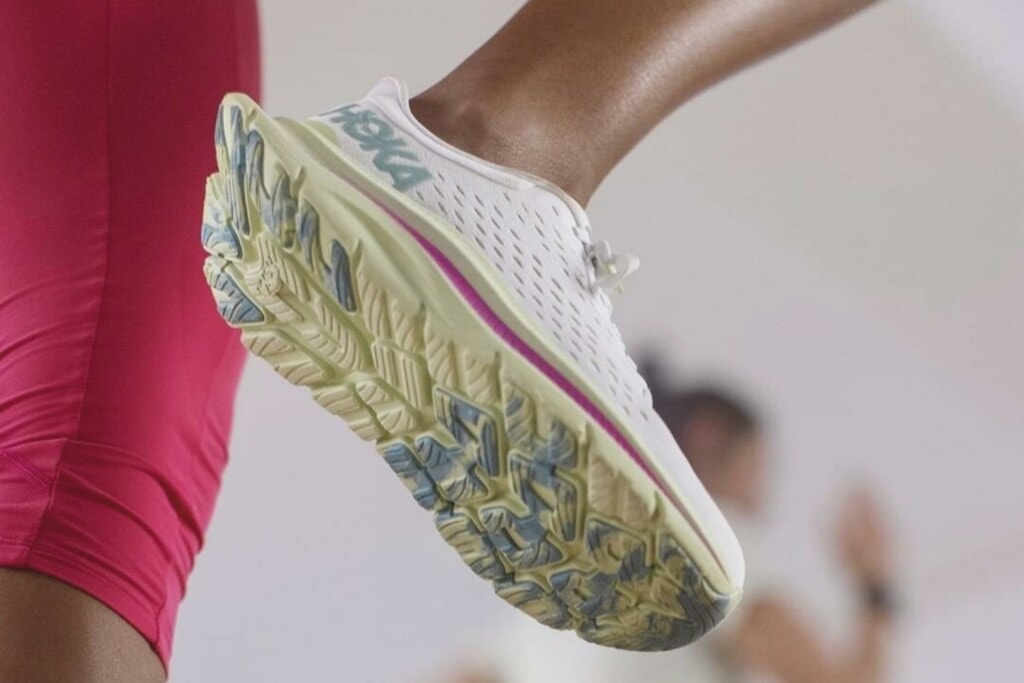
The large vents on the upper don’t make it too flimsy, while the tongue is more padded and secured with partial gusseting. This also bodes well for durability. Overall, the Hoka Kawana looks extremely versatile, which means you may wear it out sooner if using it every day (compared to more single-purpose shoes). At $140, however, the price seems fair considering this shoe doesn’t excel in any one aspect, but delivers good performance for any scenarios you can think of.
Carbon footprint and animal welfare
For those looking for an environmentally friendly run and gym shoe, the Kawana is it. The upper is made of recycled jacquard with no overlays, and the whole shoe is vegan.
Conclusion
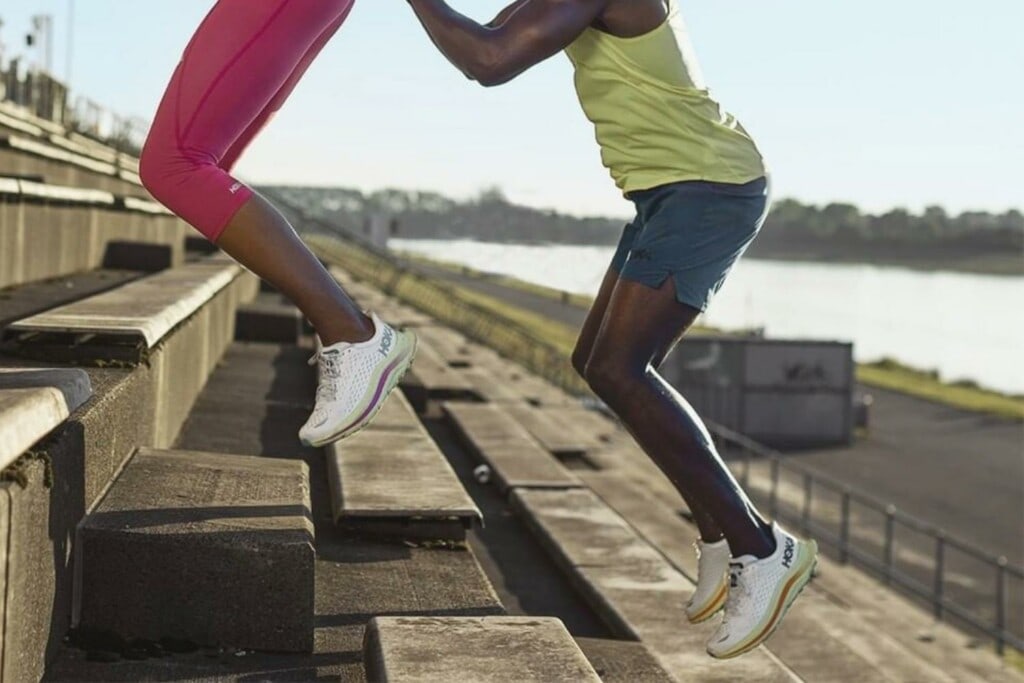
If you’re on a budget, a moderately priced pair of shoes that you can wear indoors, on road and trail alike, is pretty impressive. The versatility of the Hoka Kawana makes it ideal for beginners who don’t mind it being slightly on the heavier side, in favor of its sturdiness and stability.
Without feeling like a racing model, the Kawana delivers reliable, solid performance on almost any surface and at any intensity. Its beveled heel and wide landing platform give it a distinct geometry that inspires confidence for sideways movement and jumping during indoor training sessions. And, with a durable design and vegan and recycled materials, it looks like a better choice for the environment, too.
Facts
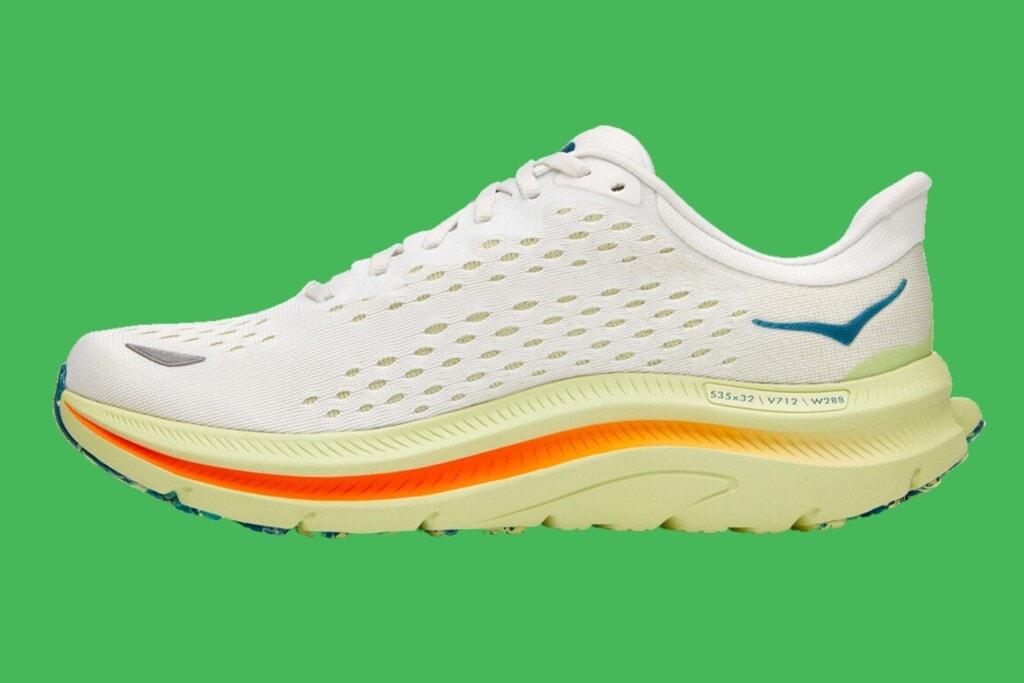
Technical Specs
| Terrain | Road |
| Pronation type | Neutral |
| Drop | 5 mm |
| Heel height | 30 mm |
| Forefoot height | 25 mm |
| Weight (men) | 285 g/10.1 oz |
| Weight (women) | 269 g/9.5 oz |
| Features | Vegan, Recycled materials |
| Athletes | |
| Release year | 2022 |
| Price | Check prices |
Cushioning
| Softness | Balanced |
| Responsiveness | Medium |
Technologies
| Outsole | Durabrasion rubber |
| Midsole | CMEVA Foam, SWALLOWTAIL Heel, Early Stage Meta-Rocker |
| Upper | Engineered Jacquard Mesh, Anatomical Achilles, Extended Heel Pull |
Use
| Speed | Moderate |
| Distance | Short, 5K, Mid, 10K, Half marathon |
| Workout | Daily running |
Comparisons
Did you know?
Since 2017, we have analyzed hundreds of road running shoes, and thousands of runners trust us to find the perfect pair every month!
Discover our selection of the best road running shoes.
